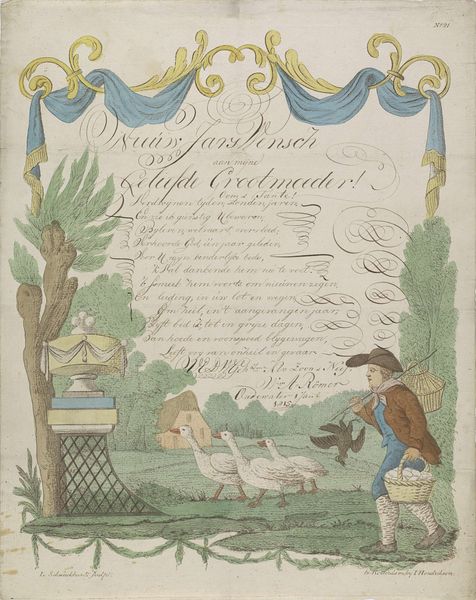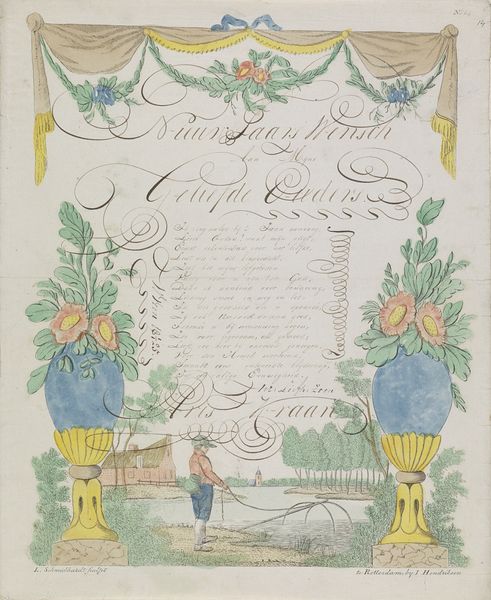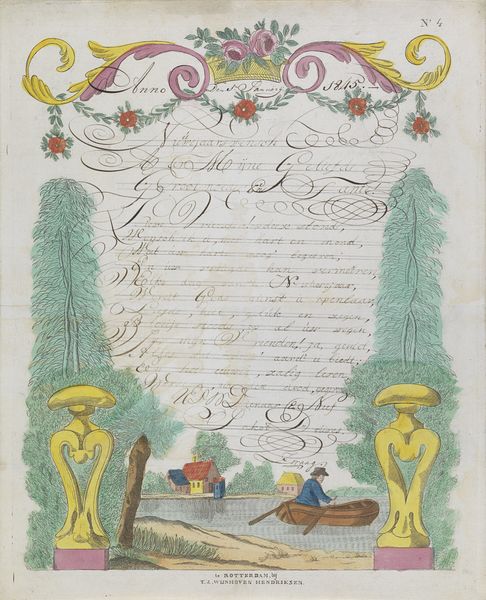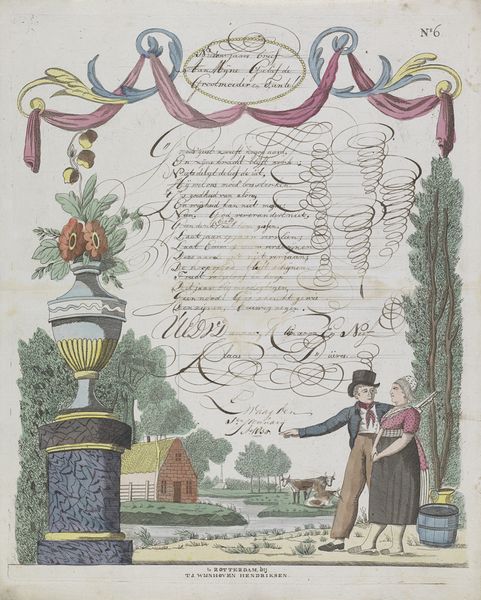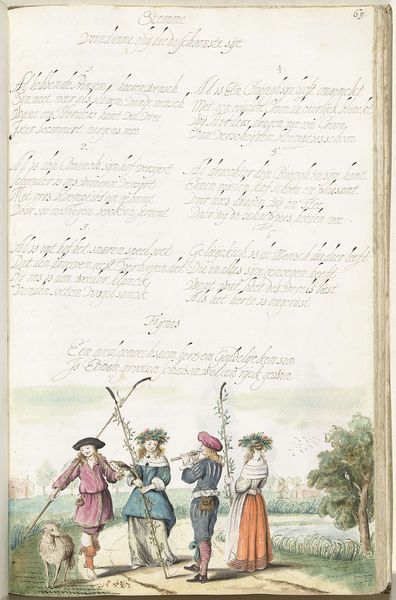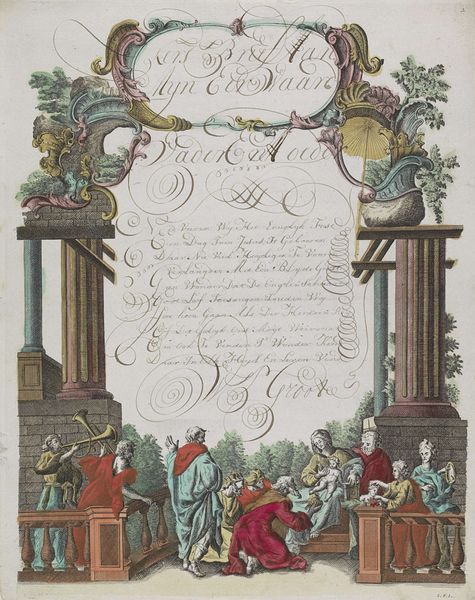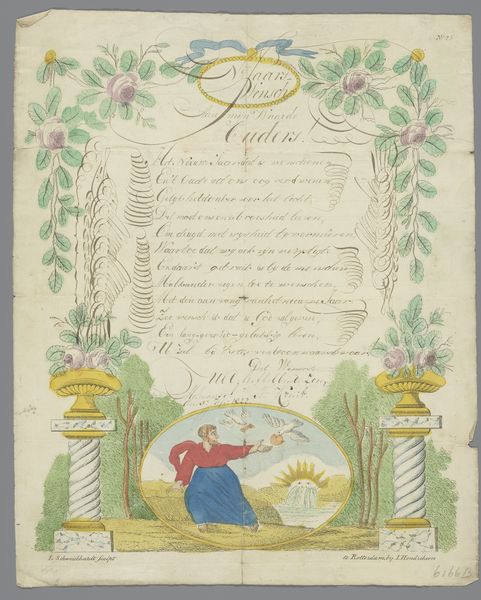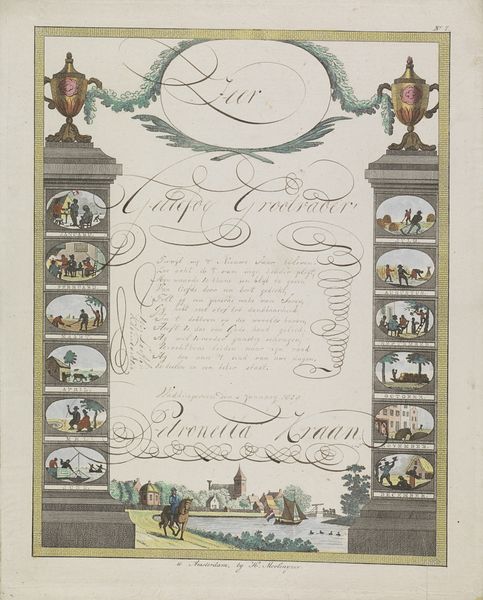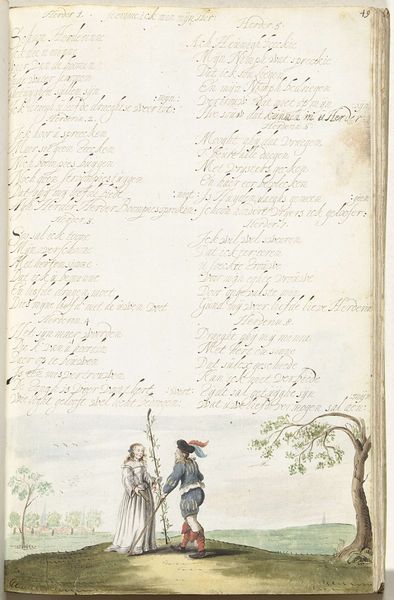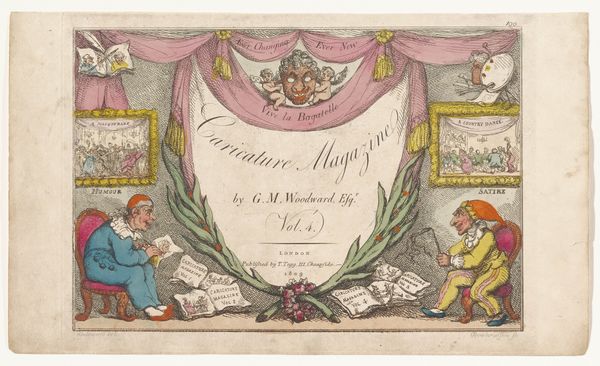
drawing, coloured-pencil, paper, watercolor
#
drawing
#
coloured-pencil
#
narrative-art
#
dutch-golden-age
#
landscape
#
figuration
#
paper
#
watercolor
#
coloured pencil
#
romanticism
#
watercolour illustration
#
genre-painting
Dimensions: height 416 mm, width 331 mm
Copyright: Rijks Museum: Open Domain
Curator: This delicate work before us, tentatively dated to 1823, is titled "Wensbrief met vissers," which translates to "Greeting Letter with Fishermen." The artist is Leonardus Schweickhardt, and it's rendered with colored pencil and watercolor on paper. Editor: It’s such an intimate and peculiar scene. There's this strong juxtaposition between the hand-written script and the delicate rendering of the fishermen—like two separate intentions forced onto one plane. Curator: Indeed. It appears to be a personalized greeting, possibly for a fisherman, decorated with a genre scene. Schweickhardt operated during a time when the Dutch Golden Age’s influence still lingered, especially within the realm of landscape and figuration, so let's look at that a bit more... You have the fishermen placed against the backdrop of what seems like an idyllic landscape, which offers a commentary on labor, and perhaps a romanticized vision of a certain class structure. Editor: The composition feels a bit crowded, though, doesn’t it? The lettering and illustrations vie for attention, each disrupting the other's potential meaning. Perhaps that tension is key. Does the recipient value the labor, or the embellishment? Who is even giving the gift in the first place? What commentary can we derive from the Dutch fishing industry, family structure, and labor at that time? I'd love to explore the sociopolitical implications this sort of piece would’ve presented in the era it was produced. Curator: I think exploring its intersection with class is essential. The very existence of this illustrated greeting indicates a level of literacy and means not necessarily accessible to all in that period, pointing to disparities even within working-class communities. It almost operates as propaganda… a quiet promotion of fishing, survival, community and familial values. Editor: Absolutely. It brings up interesting questions about who controls representation. A "primitive" style is applied to portray members of the laboring class – likely created and purchased by the educated elite, to give to the laborers they benefit from, solidifying the structure that is inherent to Capitalism. That simple transaction implies a story of immense inequity, which should not be ignored in favor of pretty colors. It can't be divorced from this tension. Curator: A compelling point. Seeing the piece through a socio-political lens reveals the complex negotiations happening in everyday imagery. It goes beyond just being a 'pretty picture' to become a loaded document reflecting societal norms. Editor: Precisely. Thanks for allowing us to challenge each other and draw a new set of relevant conclusions, applicable to present conversations around ethics and representation. Curator: Likewise. Considering your critical perspective brings vital depth to our understanding.
Comments
No comments
Be the first to comment and join the conversation on the ultimate creative platform.
